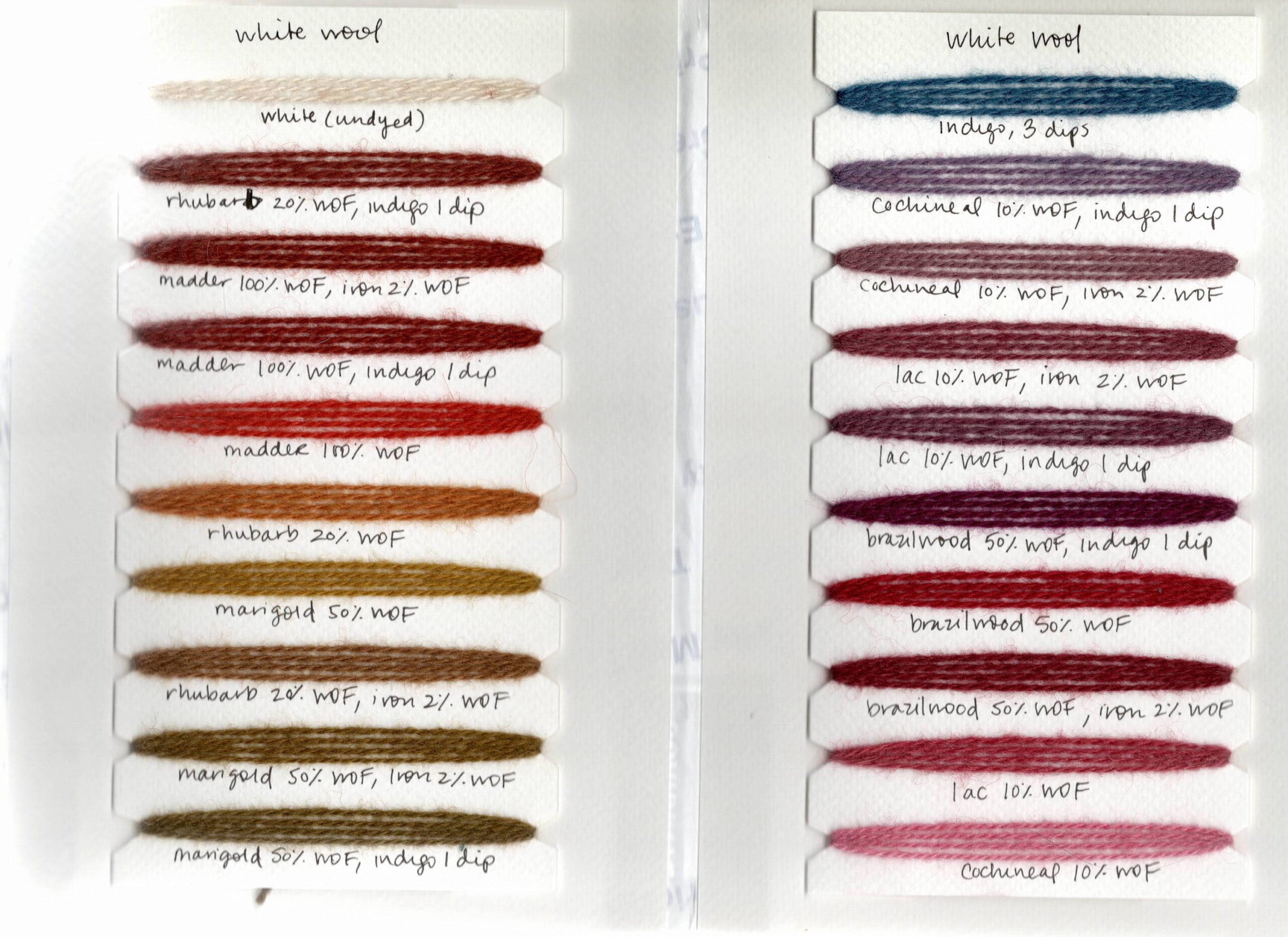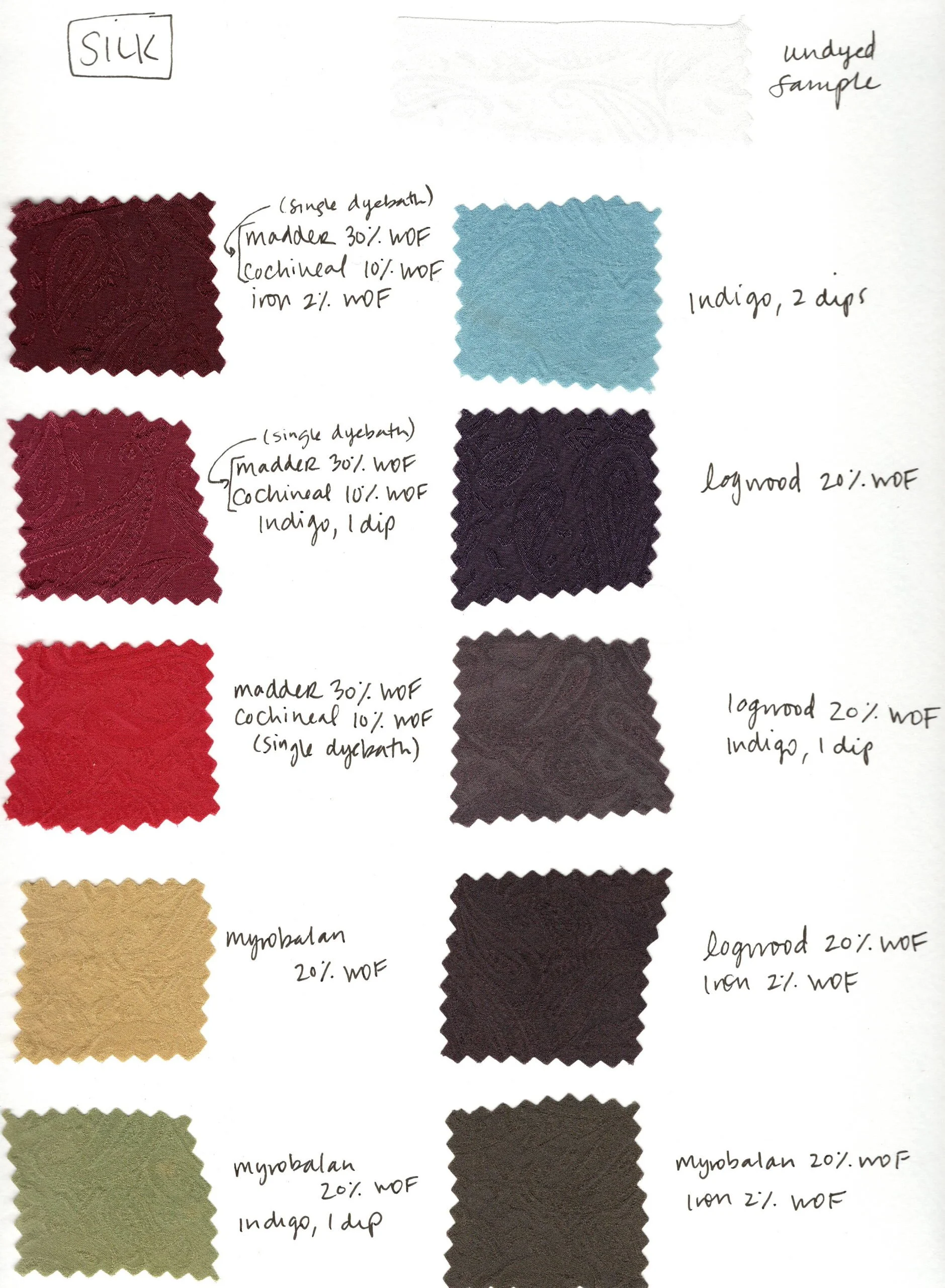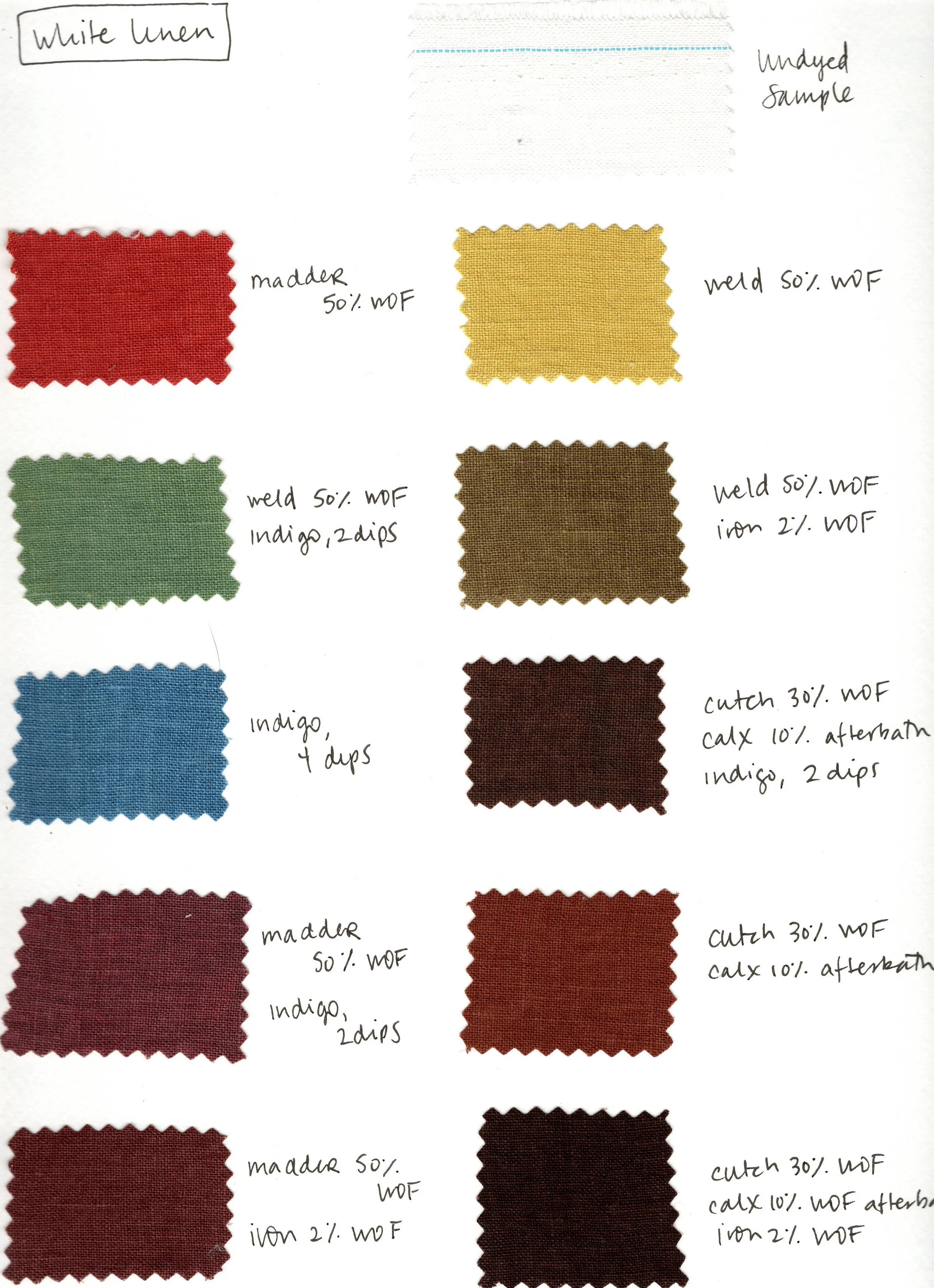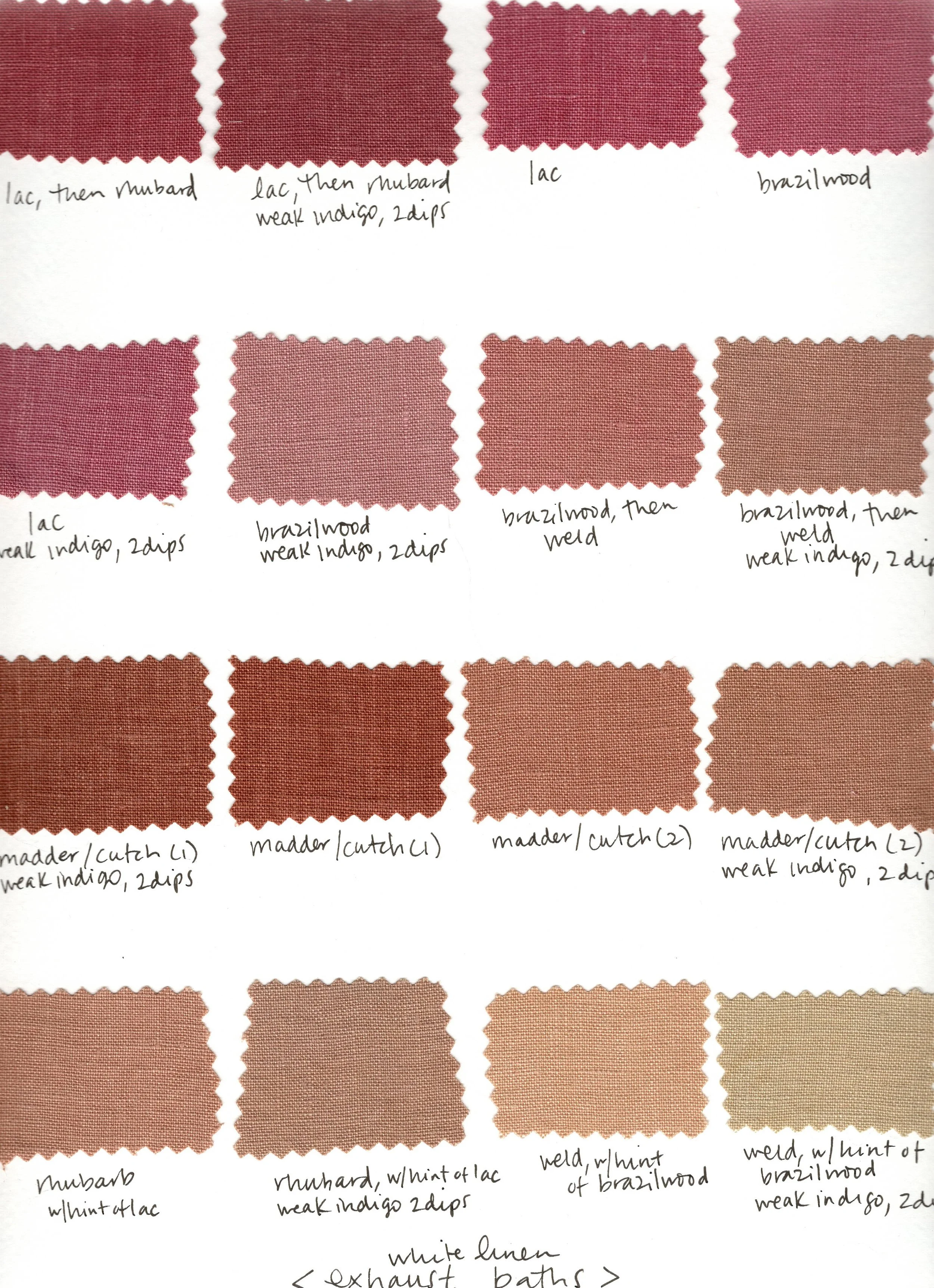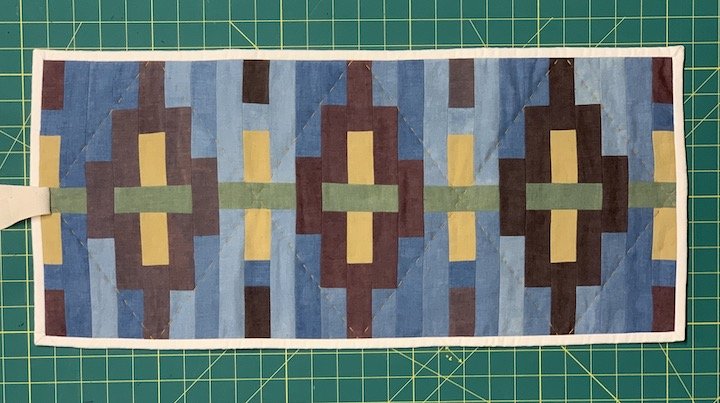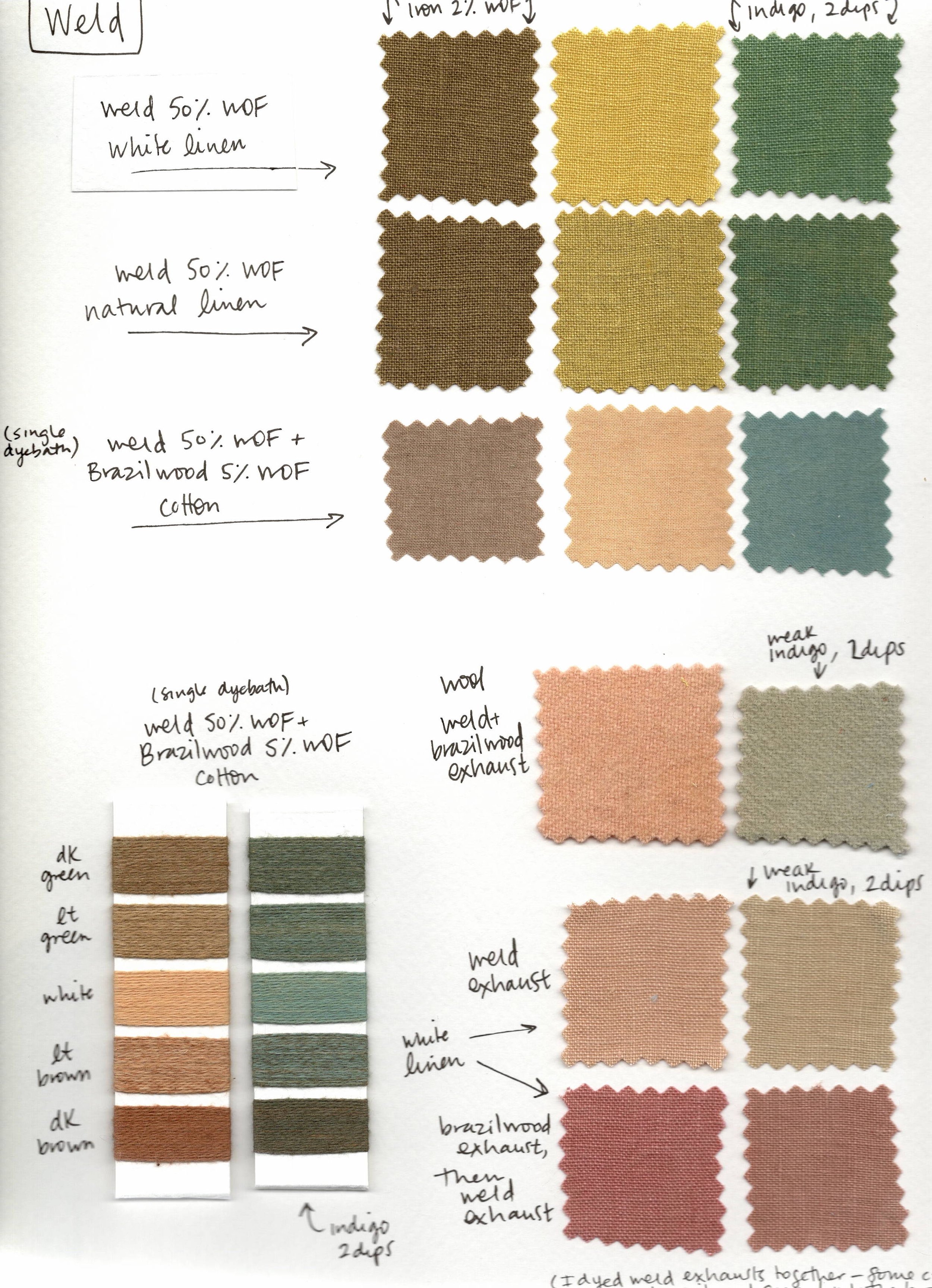Maiwa Natural Dye Workshop journals and book quilts
I took the samples from my Maiwa Natural Dye Workshop and made three journals, each with a different focus:
Yarn: All the yarn samples, organized by yarn type
Fabric: All the fabric samples, organized by fabric type
Dye: Every sample, organized by the dye(s) used
These journals catalogue my course samples and recipes for future reference. With these books, I can see both how different dyes manifest on a single fiber type, and the range of colors a dye can produce.
The journals are made using a double-sided accordion structure.
The dye (top) and yarn (bottom) journals.
In lieu of book covers, I made mini-quilts / book wraps with the fibers I dyed in the course, and quilted them with my dyed cotton yarn.
From left to right: yarn journal, dye journal, and fabric journal.
Yarn journal
Here are four pages from the yarn journal. The recipe appears below each sample. (Apologies for the wonky photos — it's hard to scan three dimensional items.)
I had multiple varieties of each yarn type.
Wool: White and gray
Cotton: Dark green, light green, white, light brown, and dark brown
I sorted the white version of each yarn in rainbow order. I then kept the same order across the different yarn varieties. Each cotton variety fit on one page and the wool needed two pages.
Wrapping yarn was the most time consuming and least enjoyable part of this process. This method (long and narrow samples) is relatively successful for the wool but not great for the cotton. The color differences are quite subtle on some shades and there's not enough yarn to show the contrast.
The quilt for this journal is based on the Over the Rainbow block from the book Scraps, Blocks & Quilts by Judy Martin. It's made from my cotton samples.
As I said in my reflections post, the cotton samples were some of my least favorite ones. However, I love the end result! It goes to show that any color can look good in the right context. And uneven dyeing can produce great texture.
Fabric journal
The fabric journal has the same structure as the yarn journal. Once page per fabric type, with the samples organized in a rainbow-ish order.
Both the wool and white linen fabrics had an additional page containing all the exhaust bath variations.
I made quilt from my cotton-hemp samples. The design is heavily influenced by ikat diamonds.
Dye journal
The dye-focused journal is my favorite one. I love seeing the range of shades produced by each dye. Presenting the samples in this manner really gives you a sense of the dye's character.
I feel like the yarn samples (short and thick) in this journal are much more successful — you get a strong sense of the color and variation in the dye.
I made this quilt from the linen samples. It uses all the exhaust variations. The design is modeled off an ikat piece I recently finished.
Design, materials, and inspiration
I wanted these dye journals to be truly special: both a tribute to, and celebration of, a class I supremely enjoyed, as well as a useful and informative reference for the future. Overall, these journals were a super fun design challenge. Lots of trial and error and making do with the supplies I had.
The design of the journals is inspired from some accordion books I made at book arts workshops. I like the idea of an accordion fold vs. a one-sided binding since you can expand it to see a large number of samples at the same time.
The other materials:
Paper: Watercolor paper. It's sturdy (especially when doubled up) and has great texture.
Adhesive: Double-stick tape to attach the samples, plus some glue stick to attach the pages to one another.
Accordion binding: Tyvek envelopes from USPS. They are thin, strong, and flexible. (I also used tags made from tyvek envelopes to label samples in the dye baths.)
Ties: 1" cotton twill tape.
Batting: Cotton leftovers from large quilt projects.
Quilt backing/binding: Neutral fabrics leftover from other projects— I think there's a cotton muslin, a linen-rayon blend, and a white quilting cotton.
Attaching the fabric samples were easy, but the yarn samples took a few iterations. I settled on wrapping the yarn on smaller pieces of watercolor paper and attached those to the base paper.
The yarn journal (below, bottom) uses a simple one-crease fold. However, the arc creates a lot of tension that pulls at the double-sided tape. For the dye journal, I added an additional crease (below, top). That "staple" formation works so much better — it's flatter and quite stable.



